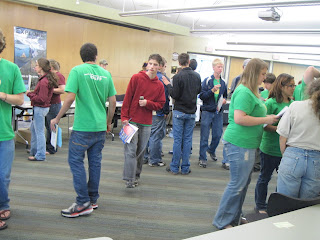Here are some resources for the session we held for the CEFPI conference in Anchorage today:
Children and Nature Network - www.childrenandnature.org
National Parks and Recreation Association - www.nrpa.org
Project for Public Places - www.pps.org
The Saguaro Seminar - www.hks.harvard.edu/saguaro/index.htm
Chugach Childrens’ Forest - http://www.alaskageographic.org/category/159/childrens-forest
Children’s Forest You Tube Channel (Chugach region youth-produced media) - http://www.youtube.com/user/ChugachChildForest#p/u/9/whLH8UzbE8U
Place-based and community-based education resources - http://www.promiseofplace.org/
Northwest Center for Sustainable Resources with guides for teachers on community-based education - http://www.ncsr.org/
Standards:
“Handbook for Public Playground Safety, Publication No. 325” U.S. Consumer Product Safety Commission, Washington, D.C. (free PDF link)
Books: (including link to possible purchase)
Design & Planning
2006, Tai, Lolly, “Designing Outdoor Environments for Children”, McGraw Hill, New York (purchase link)
2002, Kutska, Kenneth S. “Playground Safety is No Accident: Developing A Public Playground Safety and Maintenance Program” National Recreation & Park Association (purchase link)
1997. Moore, Robin, “Play for All Guidelines: Planning, Design and Management of Outdoor Play Settings for All Children”, MIG Communications, Berkeley (purchase link)
1978, City of New York, “A Playground for All Children”, City of New York, New York (purchase link)
1969, Dattner, Richard “Design for Play”, Van Nostrand Reinhardt, New York (purchase link)
Philosophy
2008, Louv, Richard, “Last Child in the Woods”, Algonquin Paperbacks, New York (purchase link)
Activities
1998. Cornell, Joseph, “Sharing Nature with Children”, Dawn Publications, Nevada City (purchase link)
2008. Ward, Jennifer, “I Love Dirt”, Trumpeter Books, Boston (purchase link)
1997, Chichester, Page, “Book of Family Nature Activities: 50 Simple Projects and Activities in the Natural World”, Owl Books, New York (purchase link)
















